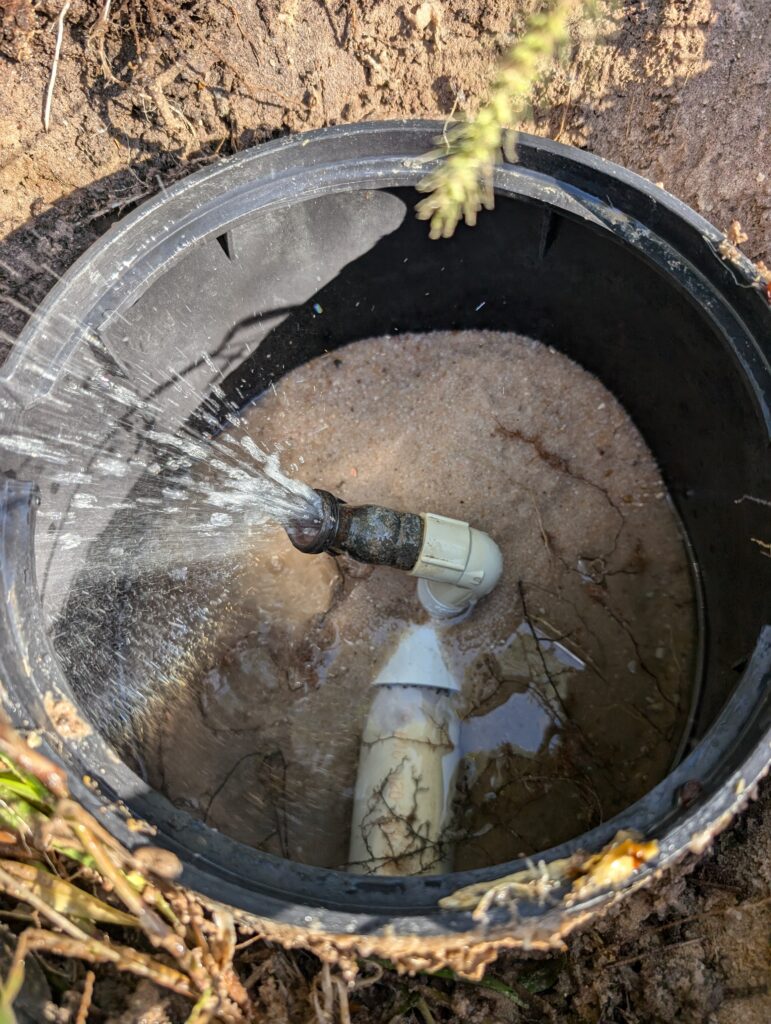Water is one of our most precious resources, and conserving it starts in your backyard.
Detecting leaks early protects this resource for future generations.
One of the most common ways water is wasted is through undetected leaks in irrigation systems, underground pipes, or other water infrastructure. Detecting leaks early not only saves water but also protects the health of your property and reduces water bills. Here’s how to spot water leaks on your property and why addressing them promptly is vital, especially within the Evergreen Underground Water Conservation District (EUWCD), serving Atascosa, Frio, Karnes, and Wilson counties.
Why Early Detection Matters
Undetected water leaks can lead to significant water loss, higher utility bills, and unnecessary depletion of groundwater resources. Staying vigilant and addressing issues early allows residents to play an active role in conserving this invaluable resource.
Steps for Long-Term Water Conservation in the EUWCD Region:
-
- Regularly inspect outdoor water systems for leaks.
-
- Install water-efficient fixtures and equipment.
-
- Monitor your water bill for sudden increases, which may indicate hidden leaks.
1. Look for Green Patches of Grass in Dry Seasons
One of the simplest ways to detect a water leak is by observing your lawn. During droughts—a common occurrence in our region—a patch of unusually green, lush grass can signal an underground leak. This moisture supports growth even when surrounding areas dry out. If you notice this pattern, investigate further to conserve groundwater. Alternatively, keep an eye on your water bill. If you see a surprising increase on your water bill, there is a chance you have a water leak.

An example of a green patch amidst dry surroundings, hinting at a possible underground leak.
2. Check for Visible Signs of Leaks Around Valves and Pipes
Water leaks are often hidden underground or within enclosed spaces. Inspect water service valve boxes, underground spigots, well equipment, and outdoor piping regularly. Look for signs such as water pooling, persistently damp soil, or visible drips. Addressing these promptly can prevent unnecessary water loss.

Water visibly leaking from a faulty spigot, indicating the need for immediate repair.
3. Repairing Leaks: A Simple Fix, Big Savings
Addressing leaks promptly is a simple yet impactful step toward water conservation. Minor repairs, such as replacing faulty connections or sealing cracks, prevent long-term system damage and reduce water waste. For the leak in the picture, we simply had to replace the spigot with a new spigot and the leak was fixed.

A repaired valve free of leaks, ensuring water flows only where needed.
Fixing a leak is more than a repair—it’s a contribution to water conservation in our community. Every drop counts, and your efforts directly impact groundwater sustainability in the EUWCD region.
Native Inspiration: Create a water-wise landscape featuring Gulf Coast Yucca, Texas Sage, or Purple Coneflower—beautiful, low-maintenance options that require minimal irrigation.

A thumbs-up from a satisfied homeowner after successfully addressing a leak.
Conclusion
Protecting groundwater starts with small, actionable steps. By identifying and fixing leaks early, you conserve water, reduce costs, and contribute to the sustainable management of groundwater resources. In the Evergreen Underground Water Conservation District, these actions directly impact the aquifers that support drinking water, agriculture, and people across Atascosa, Frio, Karnes, and Wilson counties. Together, we can ensure a reliable and sustainable water future for generations to come.



